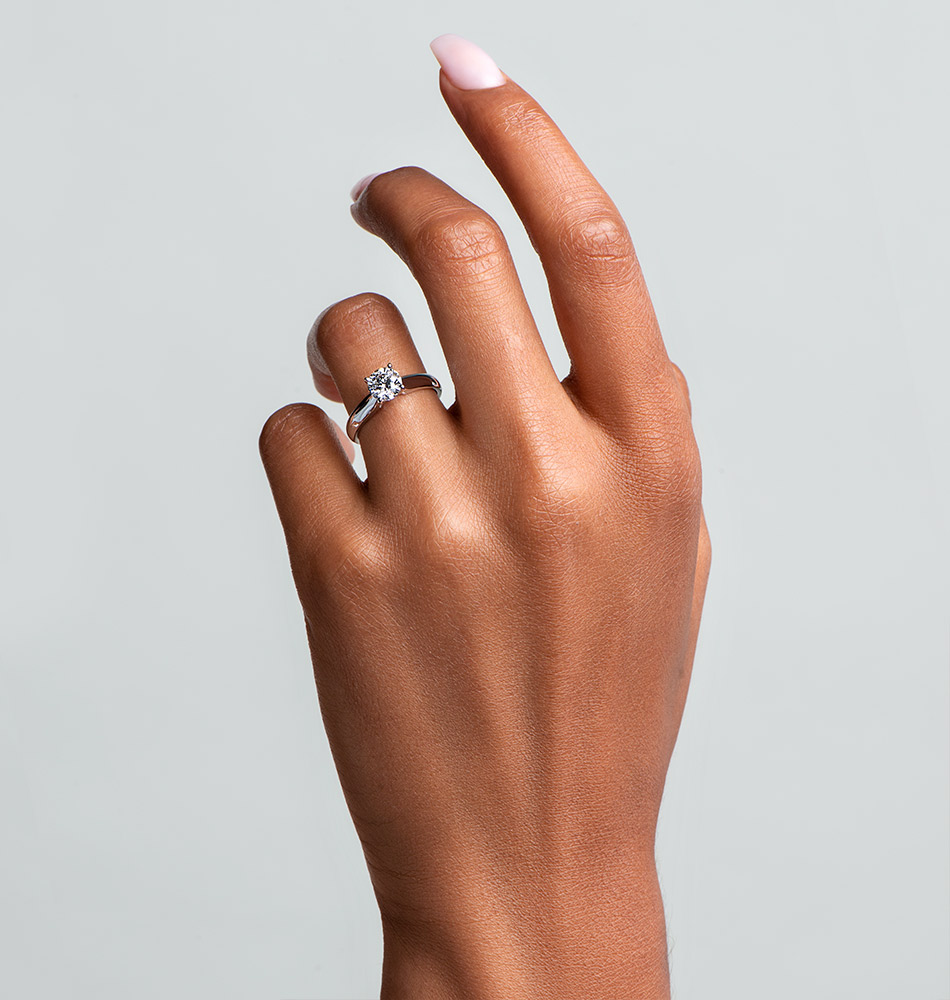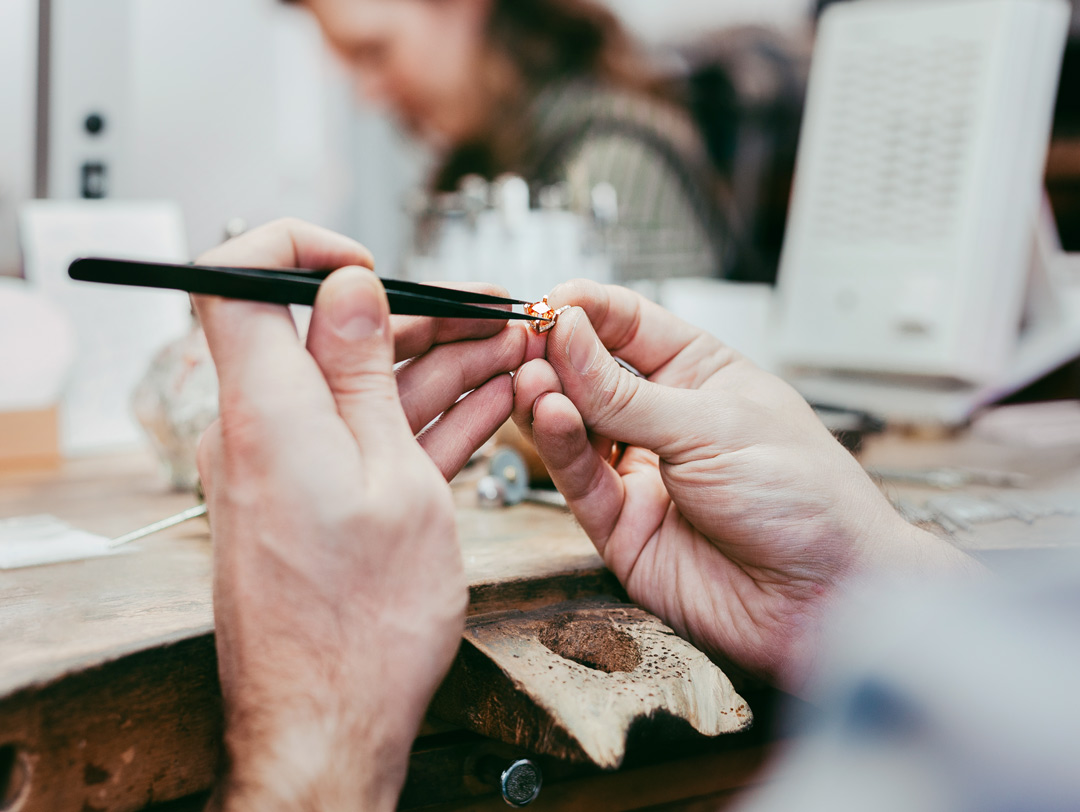Lab Diamonds
Lab grown diamonds available in Canada have given consumers greater options with the allure of having a larger, clearer diamond at 30 - 50% less than the cost of a natural diamond. The growing supply into the market of more affordable choices has given these sparkling gems a bright future in the jewellery world. Lab grown diamonds also have a guaranteed source of origin, an important factor for those looking for a “conflict-free” stone.
Are lab grown diamonds real?
Lab grown diamonds are real diamonds. Before this technology was developed, there have been other diamond simulants throughout history. These include white sapphire, white topaz, glass, cubic zirconia and, most recently, moissanite. These gems all have different physical properties.
Lab diamonds, however, have identical physical, optical, and chemical properties as their natural mined diamond counterparts in particular, type IIA natural diamonds) They have the same carbon helix structure, hardness, refractive index etc.
It’s difficult for even professionals to tell them apart without the aid of specialized tools. To the naked eye, they are identical. Both lab and natural diamonds come with grading reports based on the 4 C’s: Cut, Colour, Clarity and Carat. The quality of any of the 4 C’s will affect the purchase price and value.
At Astranova, we choose only the finest quality gems.
When did lab grown diamonds first appear?
The first breakthrough in creating lab grown diamonds was achieved back in the 1950s. This technology first produced only small industrial-grade diamonds, suitable for cutters, drills, and other abrasive tools. Only in recent years has the technology advanced to achieve gem quality and, in particular, colourless and near colourless lab diamonds. This is when lab diamonds started to take off. They are now also being produced with exceptional quality in a variety of colours and sizes.
Are lab grown diamonds just a trend or here to stay?
In Canada, the popularity of lab diamonds in the world of fashion, coupled with their affordability, make them an attractive option to the discerning buyer. Many large design houses and royal families are opting for lab grown diamonds in efforts to support the message of sustainable diamond production. Lab diamonds offer the convenience of quick production and accessibility to more custom shapes, sizes and colours. More and more, we are seeing the rise of lab diamonds in the worldwide marketplace- a bright lasting future with options to suit any buyer. Enquire about a consultation with our maker, Simon Yaghdijan, the face behind Astranova Jewellery.
.
Shop Engagement Rings
All of our rings are meticulously handcrafted in our Vancouver studio, under the supervision and in the hands of our Founder & Lead Designer, Simon Yaghdjian. We select only the best available diamonds.
It’s challenging to measure the carbon footprint of a lab diamond compared with a mined diamond. The energy needed to produce the high-temperature and high-pressure of lab diamonds is one factor- some labs use only solar power in order to mitigate this. The manufacturing process for the equipment is another major factor. As the equipment needed to make this technology possible needs to withstand high heat and pressures, the materials required have a footprint of their own.
No, under normal lighting conditions, they look exactly the same. Lab grown diamonds do, however, fluoresce and phosphorus orange under black light. Some natural diamonds also have this quality.
Natural diamonds are formed under extremely high temperatures and pressure to create the diamond from carbon. Lab diamonds are created in the same conditions as their natural counterpart, but in a controlled setting. Lab diamonds are created by one of two methods:
The original method was called HTHP (High Temperature/High Pressure). As the name explains, high temperature and high pressure are used to mimic the natural growing conditions of a diamond in the earth, but uses a natural diamond as a seed to begin the process. Over 850,000 pounds per square inch of pressure is needed to create the right conditions for the diamond crystals to form. Carbon is dissolved into molten metal and crystallizes on the diamond seed to form more crystals and grow the diamond. This method comes with a high cost and complexity.
The second method, CVD (Chemical Vapor Deposition) was developed in the 1980s and is the most widely used method. Again, a small natural seed diamond is used and placed in a plasma reactor with carbon gas. Intense heat enters the chamber, and as carbon particles begin to attach to the seed diamond, the diamond grows larger. Most industry leaders prefer this method for the crystal quality. The HTHP method is often applied after a diamond is grown with CVD to enhance the colour further.
Lab diamonds are being produced to the highest clarity and colour grades. They are also being cut and polished to the highest standards in traditional and fancy cuts.
The speed at which lab diamonds are grown and the more recent nature of their creation set them apart from natural diamonds. Some natural diamonds take shape over the course of a few days while others have taken millions of years.
Two percent of earth-mined diamonds are Type IIA diamonds while all lab grown diamonds are Type IIA. Natural Type 2A diamonds are a finer quality crystal and are rarest amongst the rare. Thus, they set the bar for lab diamonds.



